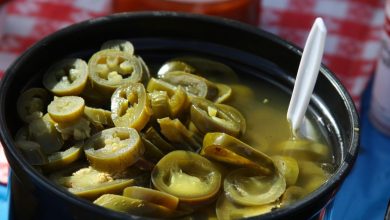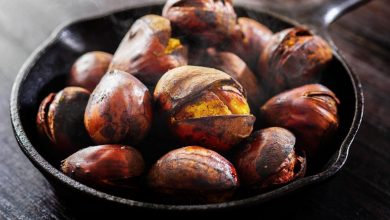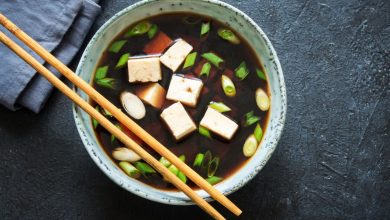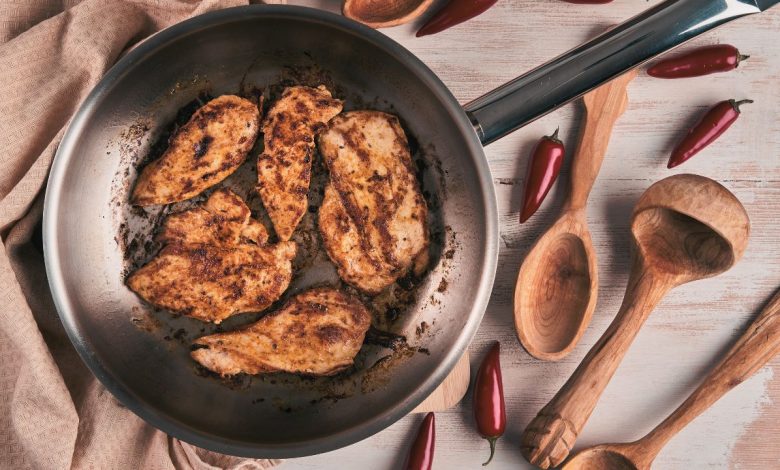
Stainless steel pans are a popular choice for many home cooks because they are durable, versatile, and easy to maintain. However, they can also get stained, discolored, or burnt over time, especially if you cook with high heat or acidic ingredients. Fortunately, there are some simple and effective ways to clean stainless steel pans and restore their shine and performance. In this article, Trendbbq will show you how to clean stainless steel pans using common household items, such as dish soap, baking soda, vinegar, and more.
Table of Contents,
1. Why Choose Stainless Steel Pans?
Stainless steel cookware offers numerous advantages compared to other types of pots and pans. These advantages include:
- Non-reactive: In contrast to aluminum or copper cookware, stainless steel does not react with acidic ingredients like tomatoes, lemons, or vinegar. This means you can cook a wide variety of foods in stainless steel pans without altering the taste or appearance of your dishes.
- Even heat distribution: Stainless steel pans typically feature a core layer of aluminum or copper sandwiched between two layers of stainless steel. This design enables them to evenly and rapidly distribute heat, resulting in improved browning and searing of your culinary creations.
- Oven-friendly: Stainless steel pans can endure high temperatures in the oven, making them perfect for roasting, baking, or broiling. They are also compatible with various stovetops, including induction.
- Durability: Stainless steel cookware is highly resistant to rust, corrosion, scratches, and dents. With proper maintenance, these pans can last for many years.
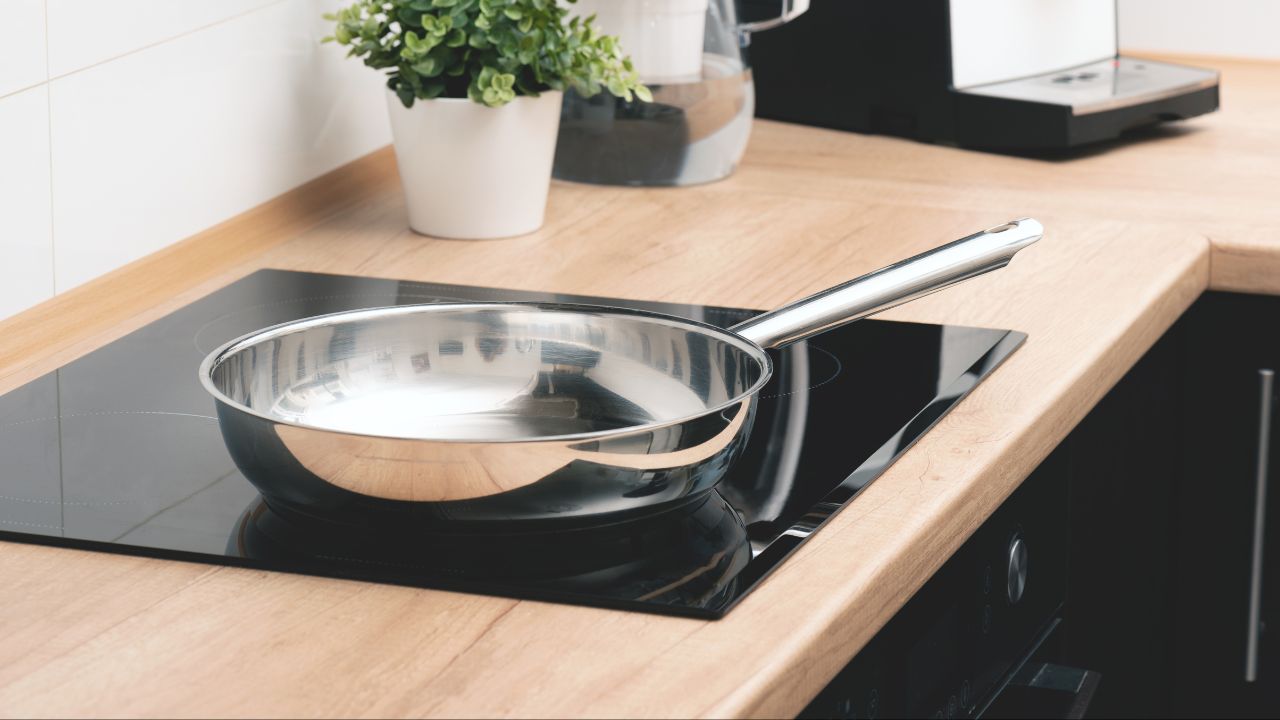
2. How to Maintain Stainless Steel Pans for Daily Use
To effectively clean stainless steel pans after daily use, adhere to these straightforward instructions:
- Let the pan cool down entirely prior to cleaning it. Never immerse a hot pan in cold water, as this may lead to warping or cracking.
- Remove any excess oil or grease by using a paper towel or a spatula.
- Pour hot water into the pan and incorporate a few drops of dish soap. Employ a non-abrasive sponge or a dish brush to scrub both the interior and exterior of the pan. Rinse thoroughly with clean water.
- Carefully dry the pan using a soft cloth or paper towel. This step will prevent the formation of water spots and streaks on the surface.
- Store the pan in a dry location, away from moisture and humidity.
3. How to Clean Stainless Steel Pans With Stuck-On Food
At times, food may become adhered to your stainless steel pans, forming a stubborn brown layer that can be challenging to remove. This phenomenon is known as fond, and surprisingly, it can enhance your cooking experience. Fond consists of caramelized sugars and proteins that contribute flavor and depth to your sauces and gravies. To release and utilize the fond in your dishes, you can employ a deglazing technique by introducing a liquid such as wine, broth, or water. Here’s how you can accomplish this:
- Once you’ve taken your food out of the pan, return the pan to the stove and set it over medium-high heat.
- Pour enough liquid into the pan to cover the bottom and bring it to a boil.
- Employ a wooden spoon or spatula to scrape the font from the bottom of the pan. For an extra flavor boost, consider adding some aromatics like garlic, onion, herbs, or spices.
- Allow the sauce to simmer until it reduces to your desired thickness. Season with salt and pepper as needed.
- Pour the sauce over your food or serve it separately.
If you prefer not to incorporate the fond into your dishes and simply want to make cleaning easier, you can still deglaze the pan using a mixture of water and dish soap. Here’s how:
- Following the removal of your food, return the pan to the stove over medium-high heat.
- Add a sufficient amount of water and dish soap to cover the pan’s bottom, then bring it to a boil.
- Use a wooden spoon or spatula to scrape off the food that’s stuck to the pan’s bottom.
- Turn off the heat and allow the pan to cool slightly.
- Wash the pan as usual with hot water and a sponge or dish brush.
4. How to Clean Stainless Steel Pans With Burnt Food
Burnt food can leave black marks on your stainless steel pans that are difficult to remove with regular washing. However, you don’t need to throw away your pans or resort to harsh chemicals. You can use some natural ingredients that are safe and effective at removing burnt food from stainless steel pans. Here are some of them:
4.1. Baking Soda – How to clean stainless steel pans
Baking soda serves as a gentle abrasive capable of effectively eliminating burnt food residues from your pans without causing any scratches. Furthermore, it possesses the ability to neutralize unpleasant odors and eliminate stains from stainless steel surfaces. Here’s a step-by-step guide on how to utilize it:
- Sprinkle a generous amount of baking soda onto the burnt area of your pan.
- Add enough water to create a thick, consistent paste.
- Allow the mixture to sit for 15 minutes or longer, depending on the severity of the burnt residue.
- Employ a non-abrasive sponge or a dish brush to vigorously scrub the paste into the pan, then rinse thoroughly with clean water.
- Lastly, ensure the pan is completely dried using a soft cloth or paper towel.
4.2. Vinegar
Vinegar, an acidic substance, possesses the ability to dissolve charred residues on cookware and rejuvenate the luster of your stainless steel pans. Furthermore, it serves as a disinfectant, eliminating bacteria and eliminating unpleasant odors from your cookware. Here are the steps to employ it effectively:
- Fill the pan with enough water to submerge the scorched area completely.
- Add one cup of white vinegar and bring the mixture to a boil.
- Turn off the heat and allow the pan to sit for 10 minutes or longer, depending on the extent of the burn.
- Utilize a wooden spoon or a spatula to scrape off the burnt food from the pan’s bottom. Rinse it thoroughly with clean water.
- Dry the pan meticulously using a soft cloth or a paper towel.
4.3. Commercial Cleaner
If baking soda and vinegar prove ineffective, an alternative solution is to utilize a specialized commercial cleaner specifically designed for cleaning stainless steel pans. One of the most widely recognized options is Bar Keepers Friend, which incorporates oxalic acid capable of effectively eliminating rust, stains, and stubbornly burnt food residues from stainless steel surfaces. Here are the steps for its application:
- Begin by wetting the pan and evenly sprinkling Bar Keepers Friend over the affected burnt area.
- Employ a damp sponge or a dish brush to gently work the cleaner into the pan’s surface. Allow it to sit for a few minutes, but ensure it does not dry on the stainless steel.
- Thoroughly rinse the pan with clean water, and use a soft cloth or a paper towel to wipe away any remaining residue.
- Finally, ensure the pan is completely dried using a soft cloth or paper towel.
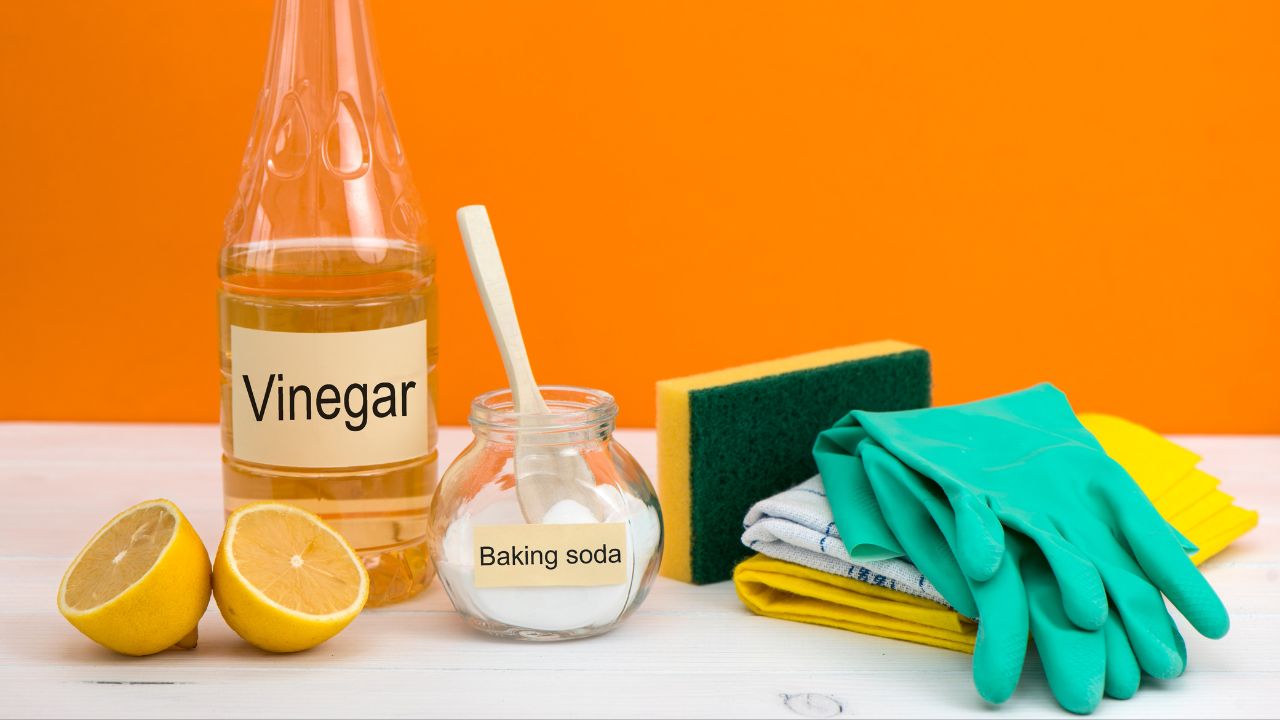
5. How to Prevent Food From Sticking to Stainless Steel Pans
One of the main challenges of cooking with stainless steel pans is preventing food from sticking to them. Unlike nonstick pans, stainless steel pans do not have a coating that prevents food from adhering to them. However, there are some tips and tricks that can help you avoid this problem and make your cooking easier and more enjoyable. Here are some of them:
- Preheat your pan properly. A hot pan will create a thin layer of steam between the food and the surface, preventing sticking. To test if your pan is hot enough, sprinkle some water on it. If it sizzles and evaporates quickly, your pan is ready. If it beads up and rolls around, your pan is too hot. If it just sits there, your pan is not hot enough.
- Use enough oil or fat. Oil or fat will lubricate your pan and create a barrier between the food and the surface, preventing sticking. Choose an oil or fat that has a high smoke point, such as vegetable oil, canola oil, peanut oil, ghee, or clarified butter. Avoid using butter or olive oil, as they can burn easily at high temperatures.
- Don’t overcrowd your pan. Overcrowding your pan will lower the temperature and create steam, which will make your food stick and lose its crispiness. Cook your food in batches and leave some space between each piece.
- Don’t move your food too soon. Moving your food too soon will cause it to stick and tear apart. Let your food cook undisturbed until it forms a crust and releases easily from the pan. You can check by gently lifting one corner of your food with a spatula or tongs. If it sticks, leave it alone for another minute or two.
Learning how to clean stainless steel pans is a simple yet essential skill for any home cook. With the right tools and techniques, you can maintain the beauty and functionality of your stainless steel cookware. Regular cleaning and proper care will ensure that your stainless steel pans continue to serve you well in the kitchen for years to come.
6. FAQs
6.1. Can I put my stainless steel pan in the dishwasher?
While some stainless steel pans are labeled as dishwasher-safe, it’s generally recommended to hand wash them. Dishwasher detergents can be abrasive and may cause discoloration or damage to the pan over time.
6.2. How do I remove burnt-on food residue from my stainless steel pan?
Fill the pan with a mixture of water and a few tablespoons of baking soda, then simmer it on low heat for 15-20 minutes. Afterward, use a non-abrasive scrubber or a stainless steel scouring pad to gently remove the residue.
6.3. Is it safe to use steel wool or abrasive pads on stainless steel pans?
While stainless steel is resilient, it can still be scratched by abrasive materials. Use non-abrasive scrubbers, nylon brushes, or specialized stainless steel scouring pads to avoid damaging the pan’s surface.
6.4. Can I use bleach or harsh chemicals to clean stainless steel pans?
Avoid using bleach or harsh chemicals on stainless steel pans as they can damage the finish and potentially leave harmful residues. Stick to gentle, non-abrasive cleaners.
